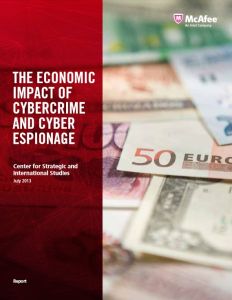Зарегистрируйтесь на getAbstract, чтобы получить доступ к этому краткому изложению.

Зарегистрируйтесь на getAbstract, чтобы получить доступ к этому краткому изложению.
James Lewis and Stewart Baker
The Economic Impact of Cybercrime and Cyber Espionage
CSIS, 2013
Что внутри?
Malicious cyber activity costs the American economy around $100 billion a year and more than 500,000 jobs
Recommendation
Cybercrime and espionage wreak havoc on the global economy. Figuring out the price of cybercrime is a challenge because researchers are faced with incomplete data, skewed surveys and questionable assumptions. James Lewis and Stewart Baker of the Center for Strategic and International Studies built a new model based on real-world analogies that puts the cost to the US economy at $100 billion a year. Though their workings are somewhat opaque, getAbstract recommends their analysis to business leaders who strive to protect their firms from the perils of cybercrime.
Summary
About the Authors
James Lewis is a director and senior fellow at the Center for Strategic and International Studies (CSIS). Stewart Baker is a CSIS fellow and a partner at Steptoe & Johnson LLP.

















Comment on this summary